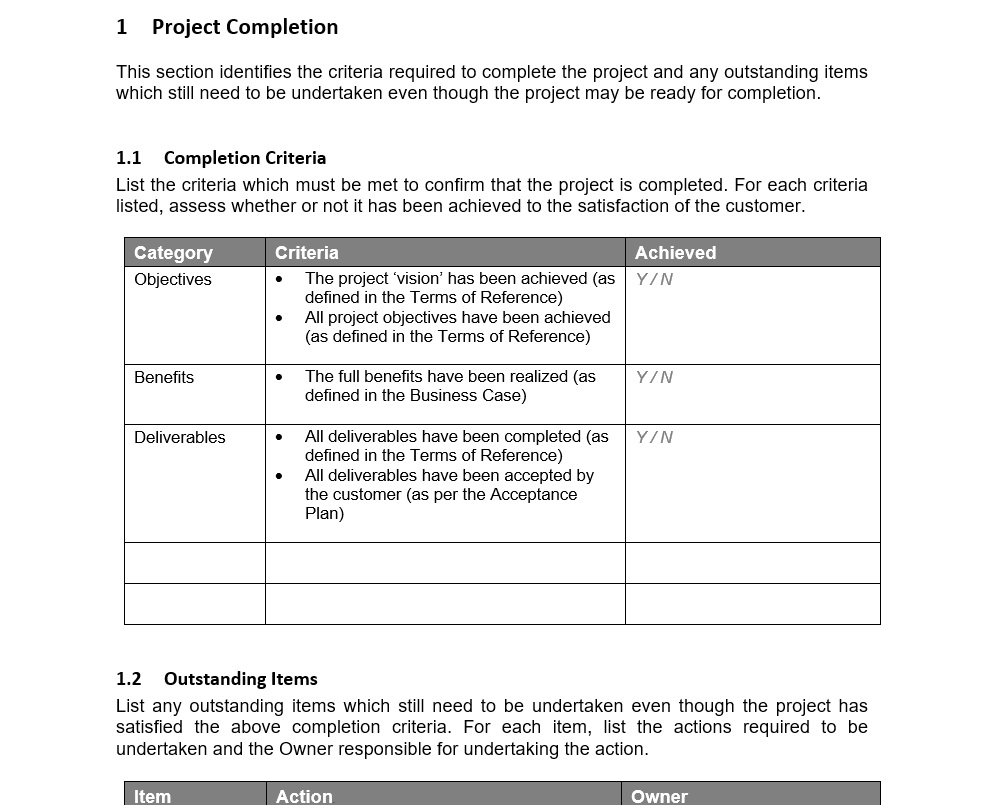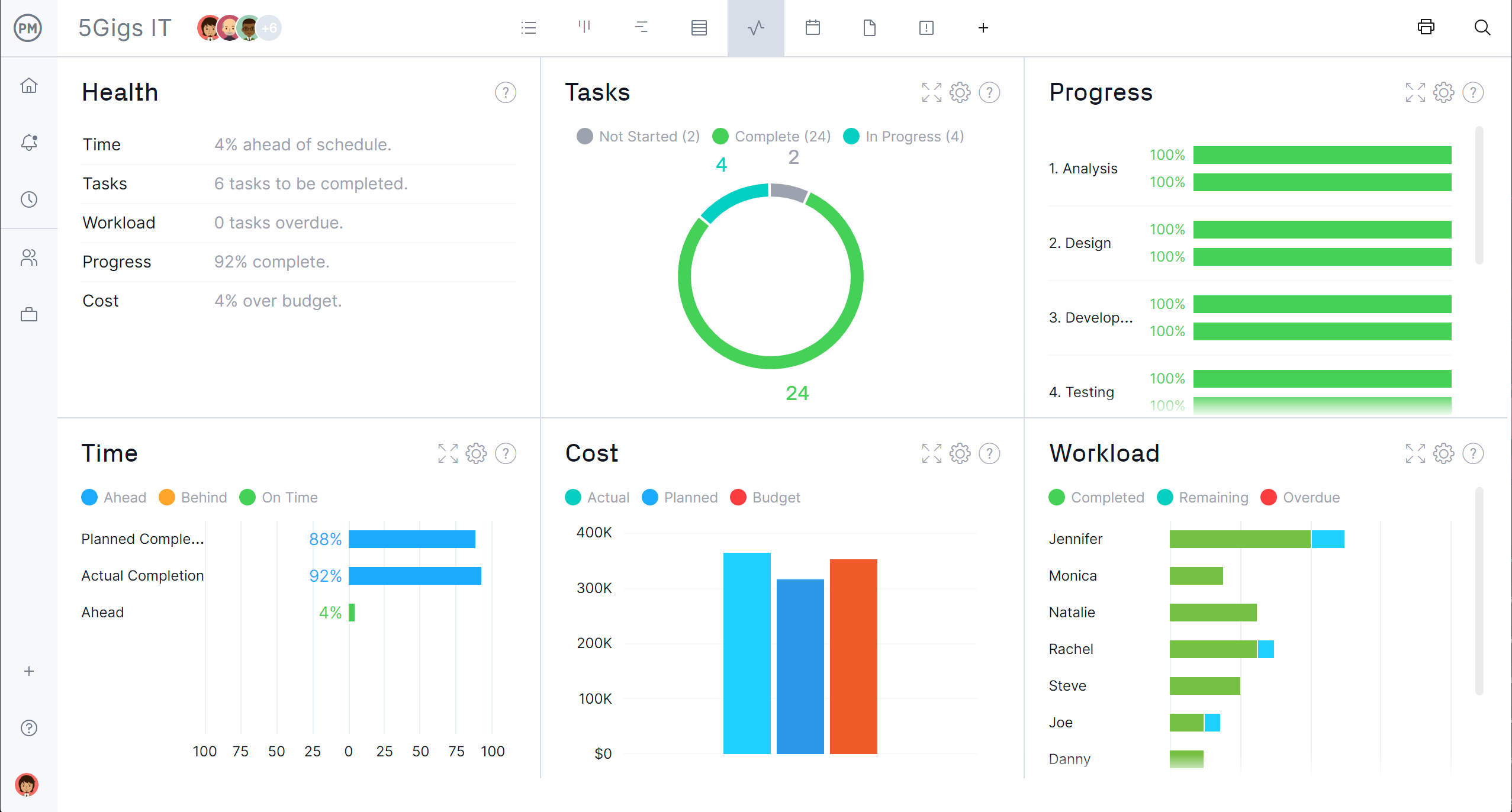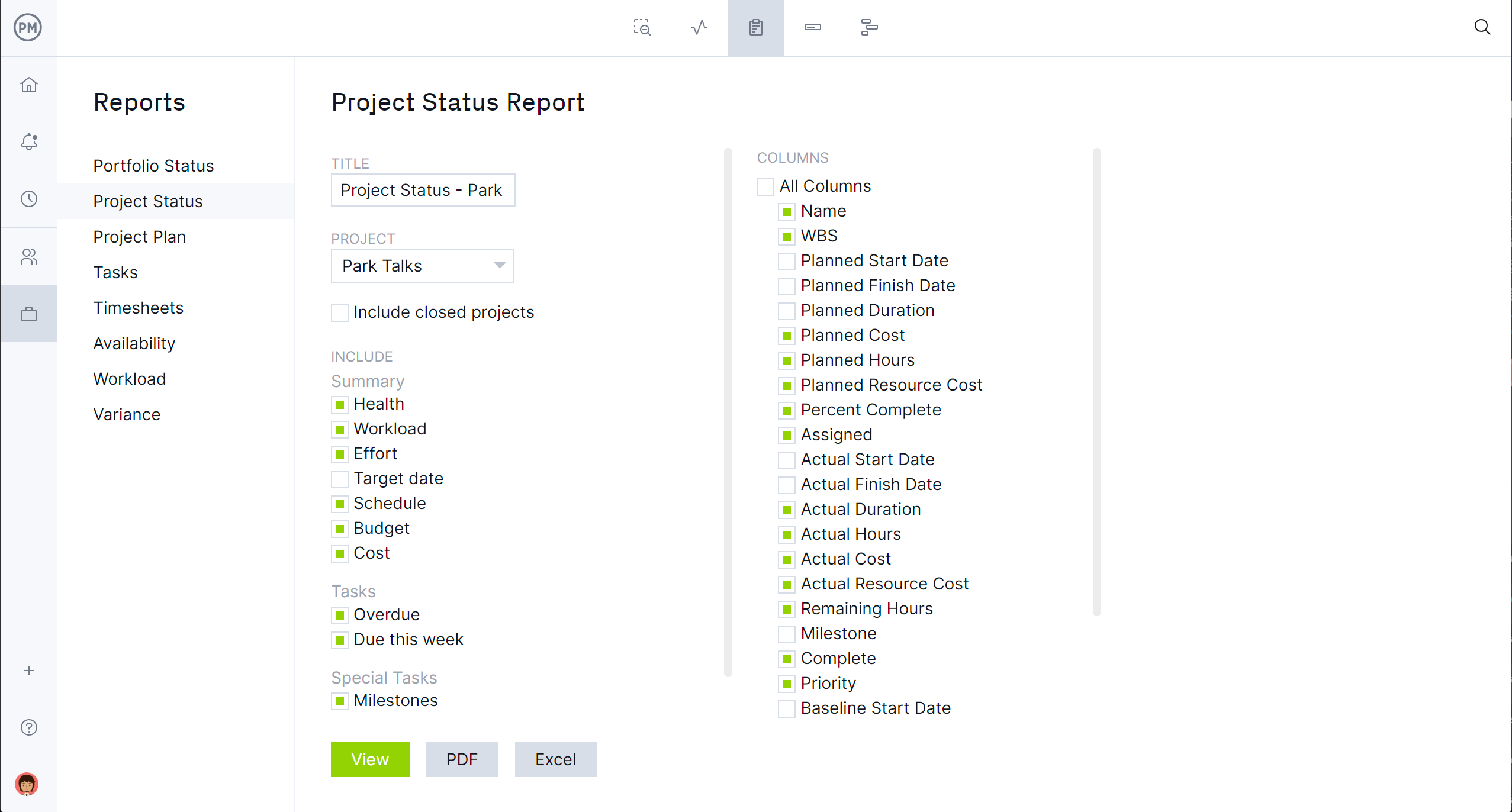Project planning, execution, monitoring and controlling are often the focus of project management. Even project initiation gets attention, but project completion is usually mentioned as an afterthought.
That’s a mistake. Every phase of a project is important. Project completion is more than delivering on time, within budget and meeting quality expectations. Here are 10 steps that will lead to successful project completion.
What Is Project Completion?
Project completion is the final phase of a project’s life cycle, which starts with initiation and moves through planning, execution, monitoring and controlling to project completion. The project reaches completion when all the activities are finalized and the project is delivered to the client or stakeholder.
There are many key activities to the project completion phase, from verifying that all the project’s deliverables meet executions and are accepted by stakeholders, to completing all project documentation and doing a post-mortem to identify what went right and what didn’t. The project is then transferred to the stakeholders and the project team’s efforts are recognized.
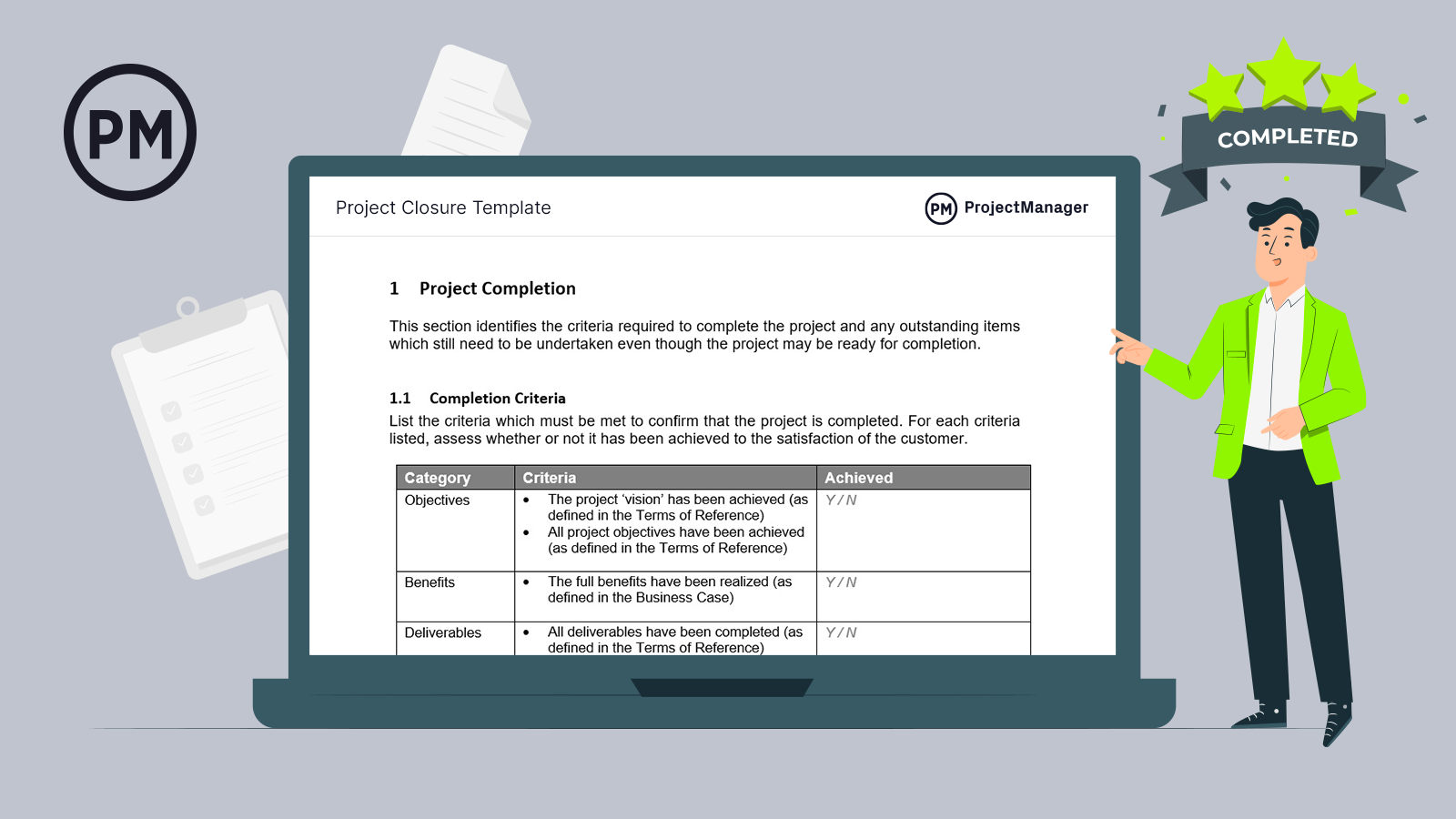
Get your free
Project Closure Template
Use this free Project Closure Template to manage your projects better.
Get the Template
Organizing project documentation and final activities can be done more efficiently with the same project management software used to plan, execute and control the project. ProjectManager is award-winning project and portfolio management software that has unlimited file storage to hold all project documentation and make it easy to track. Using Gantt charts helps to see the percentage complete for all activities, which helps to ensure that all contractors have been paid and teams have moved on to other projects. Plus, add notifications to ensure payments are delivered on time. Get started with ProjectManager today for free.
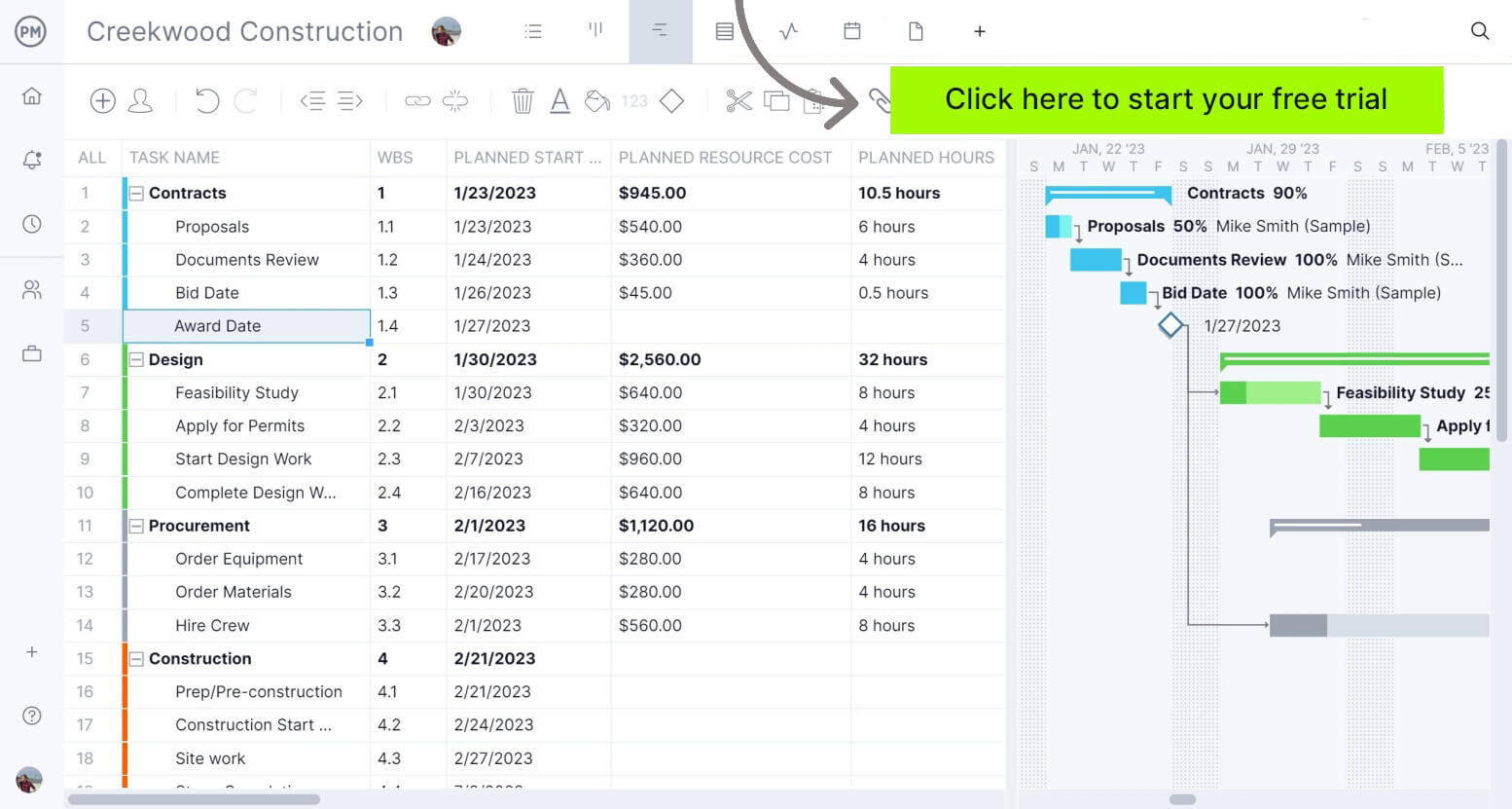
What Is a Project Completion Report?
A project completion report is a document that provides an overview of the project and is created to provide stakeholders with a project summary. Included in the project completion report are the original project goals and objectives as well as statements showing how the project met those goals and objectives.
The performance of the budget and schedule are also summarized in the project completion report. For example, did the project deliver on time, within budget and meet the quality expectations of the client? There’s also a section that specifically addresses client satisfaction. Proof that clients have received deliverables, invoices, project files and communications and more are also part of the project completion report.
This is the last project deliverable and is used to elicit feedback from stakeholders and used to improve future project performance. The project manager creates it to determine project success for senior management. This closes the project, releases project resources and communicates final information to stakeholders.
What Is a Project Completion Certificate?
A project completion certificate is a legal document that states the project has been completed as contracted. These are more commonly found in construction projects, where there are many regulations and bylaws that are set by the local municipal body and the project needs to be in compliance with them. It is provided after the inspection of the building project. It is important for getting an income tax rebate on home loans, to sell or occupy a property and more.
Project Completion Checklist
Because project completion is just as important as the other phases of the project life cycle, it should get the same attention as one puts into planning, execution, etc. It’s easy to think that with the project delivered all work is done. But many loose ends need to be tied before the project can be archived and truly done. Check off the items on this list to ensure project completion is complete.
Review the Project Success Criteria
The success criteria that should be reviewed at project completion include the cost, time and scope, but aren’t restricted to the classic iron triangle. Also in review should be if the quality expectations have been met, stakeholder and team satisfaction, resource utilization, control and risk management.
Ensure All Project Deliverables Were Produced
The project will have a final deliverable, but there are a number of smaller deliverables that need to be created throughout the project life cycle first. The client or stakeholder should sign off on each deliverable. At project completion, a review of all these deliverables should be made to ensure they have been produced.
Conduct Post-Project Evaluations
The project closure stage is also a time to reflect on what went well and what didn’t. These evaluations will look at the overall effectiveness of the project and analyze the results. It helps to identify areas where improvements can be made and then apply these lessons learned to future projects.
Make a Project Completion Report
Many of these steps will be compiled in a summary called a project completion report, usually created by the project manager. This project report will note the project objectives and what the team accomplished as well as highlight any lessons learned. Recommendations for improving processes in future projects are listed and the team and sponsors are thanked. This project completion report is then distributed to the project team, customers and stakeholders.
Write a Project Completion Certificate
As noted above, the project completion certificate is a legal document that’s commonplace for construction projects. It states that the construction of the project or property has been completed to the satisfaction of the approved building plan.
Close Contracts
All contracts issued over the life cycle of a project must be completed and signed off on. This is important as it determines if the work described in the contracts was completed as defined. All the tasks and terms of the contracts must be closed before the project completion phase can be done.
Archive Project Documentation
All project documentation should be archived as it can help direct future projects. This includes all contracts, proposals, the business case, charter, scope statement, schedule, budget estimate, project management documents, surveys, status reports, checklist and emails.
Make Final Payments
Everyone must be paid for their work during the project completion phase. This is only if the suppliers, vendors, contractors, subcontractors, et al., have met their contractual obligations, including resolving any problems, making repairs, completing punch list items, etc.
Have a Post-Mortem Meeting
A post-mortem meeting is a business process in which the project team, project manager and stakeholders review and evaluate the project results. The information that’s codified in the above project evaluation is gathered in this process where everyone is expected to speak honestly and discuss where the project could have been better.
Release the Project Team
While not an official process, the project team must be released from the concluding project so they’re free to be assigned to other projects. But this process can include suppliers, contractors and other partners who should be notified that the project has been completed, confirm any final payments or obligations and release them to work on other projects.
Project Completion Template
There are a lot of details to keep track of when in the project completion stage. All of them are important. To make sure that nothing slips through the cracks, use our free project closure template for Word.
The free project completion template is fully customizable so users can add or delete items as they see fit. It comes with space to provide everything from project documentation, project plan, signoffs and lessons learned, among many other critical items.
More Project Completion Templates
Project completion involves many things. While the project completion template covers a lot of ground, other templates can help flesh out some of its parts. ProjectManager has over 100 free project management templates for Excel and Word that cover every project phase. Here are a couple more free templates that can help with project completion.
Lessons Learned Template
One of the more important parts of the project completion phase is the post-mortem or project evaluation. Use this free lessons learned template for Excel to provide a guide to gather all the pertinent information about the project and zero in on where there is room for improvement.
Project Review Template
Another tool to help evaluate and track specific metrics to figure out if the project achieved its desired results in the free project review template for word. There’s a place to define the project’s goals and objectives, risk and issues, project staffing and resources, success criteria and much more.
How ProjectManager Helps With Project Completion
These free templates are helpful in the project completion process, but they need to be used with project management software. ProjectManager is award-winning project and portfolio management software that has unlimited file storage to keep all project documentation, including templates, at the fingertips of the project manager, team and stakeholders. But that’s only the beginning. There are also features that can help manage resources and costs in real time and report on this and more by tracking project key performance indicators (KPIs).
Manage Resources and Monitor Costs
Before releasing the team, project managers must ensure they’ve completed all their tasks. They also have to monitor costs to ensure that the project is meeting its budget constraints. This and more can be done by toggling over to the real-time dashboard or portfolio dashboard if managing multiple projects. Here live data is captured and displayed on easy-to-read graphs and charts that show project metrics, such as time, cost, workload and more. There’s no time-consuming or complicated setup required as with lightweight alternatives. Project managers can get an instant status report whenever they want.

Make Project Reports in Minutes
Dashboards provide a high-level overview, but project completion also needs more detail. To get deeper into the data use customizable reports that can be generated with only a keystroke. Get reports on status, portfolio, timesheets, workload, variance and more, all of which can be filtered to focus on only the data that’s important for the project completion report. These reports can all be shared across multiple platforms, which makes it easier to deliver reports to stakeholders how they prefer to get them.

Related Project Completion Content
Project completion is part of the larger project life cycle. A lot more can be said about the end of a project and how it fits within the context of everything else needed to deliver a successful project. For those interested, below are a handful of related articles that have been published on our site that go into the subject of project completion more deeply.
- Best Project Management Software: Free & Paid Options Ranked
- 12 Essential Project Reports
- Project Documentation: 15 Essential Documents
- 5 Steps to Project Closure (Checklist Included)
- What Is the Project Life Cycle?
ProjectManager is online project and portfolio management software that connects teams whether they’re in the office, out in the field or anywhere in the world. They can share files, comment at the task level and stay updated with email and in-app notifications. Join teams at Avis, Nestle and Siemens who use our software to deliver successful projects. Get started with ProjectManager today for free.

